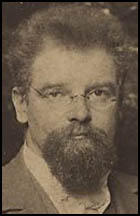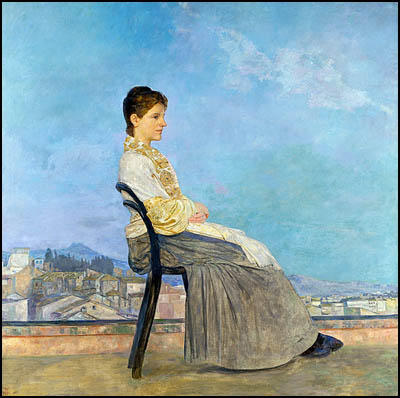Max Klinger

Max Klinger was born in Leipzig, Germany, on 18th February, 1857. He studied at Grand Ducal Baden Art School in Karlsruhe. He became interested in the work of the French artist, Gustave Courbet, who was the leader of the realist movement.
In 1878 Klinger showed work at the Academy Exhibition in Berlin. The following year Klinger became a pupil of Emile Wauters in Brussels. A year later he opened a studio in Berlin and became a member of the Berlin Artists' Association.
Karl Stauffer-Bern, who taught at the Berlin School for Women Artists, became a devote of Klinger's work. He suggested to Käthe Kollwitz, one of his students, to visit an exhibition of Ein Leben being held in Berlin. Kollwitz's biographer, Martha Kearns, has pointed out: "She (Käthe) had never heard of Max Klinger, Prussia's most skilled artist of the then-popular naturalism, a school of thought which deemed people to be predetermined victims in a bitter struggle for survival. As an art form, naturalism emphasized photolike images of actual persons, scenes, and conditions, often in the most minute, even microscopic detail. Unlike artists working in other styles, naturalist artists featured women as subjects as frequently as men."
The author of Käthe Kollwitz (1976) has pointed out that "these fifteen etchings was that of a young etchings was that of a young woman who lost her virginity to her lover and who thus, in the eyes of the bourgeoisie, had fallen into unredeemable sin.... One print, Into the Gutter, shows a young woman being shoved into an open sewer by a horde of grotesque, sadistically grinning figures." Käthe Kollwitz wrote in her journal: "It was the first work of his I had seen, and it excited me tremendously."
Klinger moved from Berlin to Paris in 1888 before settling in Leipzig in 1893. The Oxford Dictionary of Art (1988) argues: "His work reveals a powerful imagination and an often morbid interest in themes of love and death. as a sculptor he experimented with polychromy in the manner of Greek chryselephantine statues; the culmination was the statue of Beethoven in white and coloured marbles, bronze, alabaster, and ivory."

Karl-Erik Tallmo is an art critic who has argued that Klinger was the major link between the Symbolist movement of the 19th century and the Surrealist movement of the 20th century: "Klinger's virtuosity is often emphasized, his skill including not just one but a mix of several techniques. And his style is realistic and fantastic to such an extent that his etchings and engravings - not surprisingly - appealed to both symbolists and surrealists. He influenced artists as different as Edvard Munch and Max Ernst."
Tallmo goes onto to claim: "The ten etchings in the cycle Paraphrase on the Finding of a Glove from 1881 anticipates both the fetish theory of Freud and the psychedelic pictorial universe that emerged 90 years later... Of course, it comes rather naturally to interpret the glove in Klinger's serial as a fetish, a symbol of woman, love and erotism. It is, however, more difficult to see it as a symbol of a more specific woman... Maybe this is not about the madness of love at all, but about the madness of the artist, not Klinger's in particular, but the general lunacy of artistry, which might set a creative or overheated mind in full spin before some emotionally charged object."
The Oxford Companion to Western Art (2001) has pointed out: "His style incorporates strong Art Nouveau elements into conventional classical academicism and he is usually included among the Jugendstil artists. His work is technically complex and of considerable invention, full of symbolism and fantasy. As a painter he is best known for the vast Judgement of Paris (1885–7) in which the frame forms part of the whole. His most original work is to be found in his fantastic etchings which anticipate Surrealism. The most remarkable are those in the series Adventures of a Glove (1881), a grotesque exploration of fetishism which antedates Freud."
In 1883 Klinger moved to Rome and by the early 1890s he concentrated on sculpture and his marble statue of Ludwig van Beethoven was an Vienna Secession exhibit of 1902. Giorgio de Chirico has claimed that Klinger was someone "who sees clearly into the past, into the present and into himself."
Klinger used his success to help younger artists. This included establishing the Villa Romana Prize. He purchased a villa in Florence, to which he invited outstandingly gifted artists (and their families) to live for cost free for up to a year. According to Martha Kearns the idea was for the artist to be given the opportunity to absorb "the rich influences of Medieval and Renaissance works of Florentine art." Winners included Ulrich Hübner (1905), Georg Kolbe (1905), Max Beckmann (1906), Käthe Kollwitz (1906), Fritz Mackensen (1907), Ernst Barlach (1908), Willi Geiger (1909), Adolf Schinnerer (1909), Karl Albiker (1910) and Otto Richard Bossert (1914).
Max Klinger died on 5th July, 1920.
